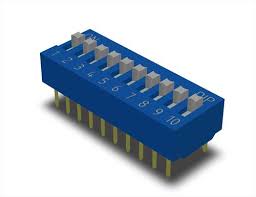 Recently, Nine Dot Connects, a printed circuit board centric organization, became the national VAR for SOLIDWORKS PCB. With that came the opportunity to explore the mechanical side of design in our effort to better understand and prepare for the future of mechatronic design. Like the old saying, ‘Can’t see the forest for the trees’, this insight into the mechanical domain gave us the opportunity to step back and see the electrical design flow from afar. It became apparent when compared to mechanical libraries, the PCB library structure is complicated by several factors, some by the very nature of electrical design, and others are self-inflicted by the PCB industry. Continue reading When it comes to libraries, maybe it’s time to take a page from the mechanical folks!
Recently, Nine Dot Connects, a printed circuit board centric organization, became the national VAR for SOLIDWORKS PCB. With that came the opportunity to explore the mechanical side of design in our effort to better understand and prepare for the future of mechatronic design. Like the old saying, ‘Can’t see the forest for the trees’, this insight into the mechanical domain gave us the opportunity to step back and see the electrical design flow from afar. It became apparent when compared to mechanical libraries, the PCB library structure is complicated by several factors, some by the very nature of electrical design, and others are self-inflicted by the PCB industry. Continue reading When it comes to libraries, maybe it’s time to take a page from the mechanical folks!
Category: Mechatronics
When STEPs Become a Misstep

Author’s note – For clarification purposes, SOLIDWORKS will be referred to as ‘SOLIDWORKS CAD’ to differentiate from SOLIDWORKS PCB.
Though STEP files are critical in collaboration between MCAD, such as SOLIDWORKS CAD, and ECAD, such as SOLIDWORKS PCB, an important issue has become more significant as of late. Because there are many ways for an electronics designer to obtain STEP files, it is difficult (if not impossible) to know what tool was used, or more importantly if the STEP file was validated. This is not just true for components that may have been downloaded from 3DContentCentral.com. Also, such components can be provided by OEMs who then, provide them to suppliers, such as Digi-Key and Mouser.
Why PCB is a Mechanical Creature – Part 2

This article’s argument for mechanical engineering involvement in PCB design is specific to the layout. The schematics and circuit design such as power, analog, and digital belong to the electrical engineering domain and this area requires classroom and lab experience which one would expect from a degreed electrical program. It is not to say that a mechanical engineer cannot do circuit design. More so, we envision a future in which academia offers degrees in mechatronic design. Under the current circumstances, this industry is notorious for making gross assumptions about an engineer’s capabilities and we wish not to propagate the belief that a mechanical engineer can do the whole PCB design based on their degree alone unless they have been exposed to circuit design during their undergraduate career. – Paul Taubman
Who Really Owns the PCB Layout? – Part 1

One would think that the title of this article should be a no-brainer. The fact of the matter is that the ownership of this vital aspect of electronic design is not only cloudy, but it will become murkier in the next 10 years. This murkiness is also an opportunity for mechanical engineers who aren’t afraid to expand their horizons.
Thermal Management and Yet again Why Mechanical Engineers Better Get Involved in PCB Design
In a recent article published in PCB Design 007 (January 2018 – See link below), one of the few Ph. D’s in the printed circuit board industry was interviewed regarding thermal issues. In particular, he and a colleague were questioning the numbers that have been long held as definitive facts. When we have an electronic product in our hands, there is a gross assumption that the thermal issues have been well thought out. Between questionable data and lack of knowledge in thermodynamics, this may not be the case.

Mechatronics and the Ever-Changing Printed Circuit Board
It may surprise you to know that it is the exception to find an electronic device that does not have a printed circuit board (PCB). Every device around you has one. There’s a bigger picture to consider when comes to the PCB, especially as we enter the age of mechatronics. The purpose of the PCB has changed over time and its role in mechatronics is going to be very important.

PCBs started off as nothing more than a convenient way to organize components. As the components got smaller with more pins, the PCB was improved to allow copper to connect between the components without having to solder individual wires. As the pin counts on these components grew, there came the ability to design boards with multiple layers of copper to handle all of the signaling. In this age of high-speed design, one cannot build such circuitry without the physical structure of the PCB to assist.
Continue reading Mechatronics and the Ever-Changing Printed Circuit Board